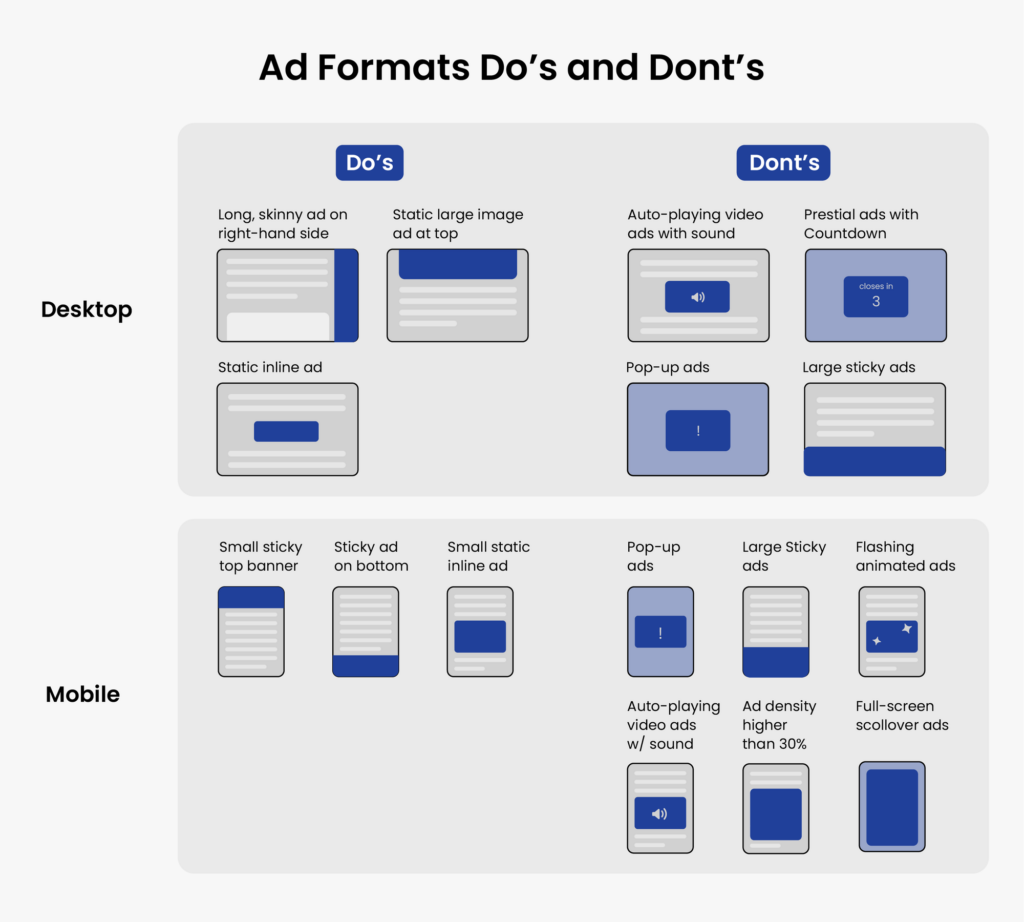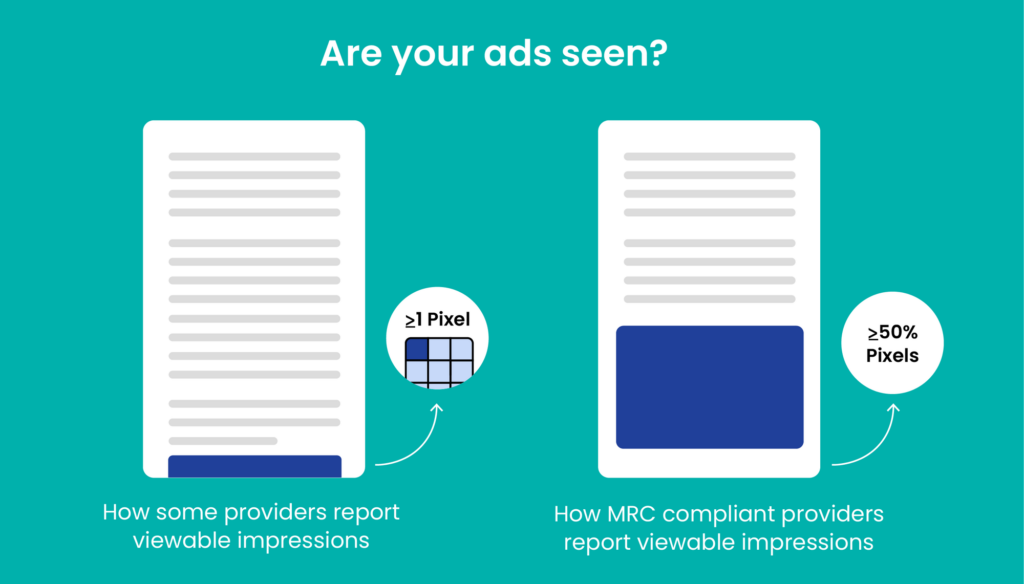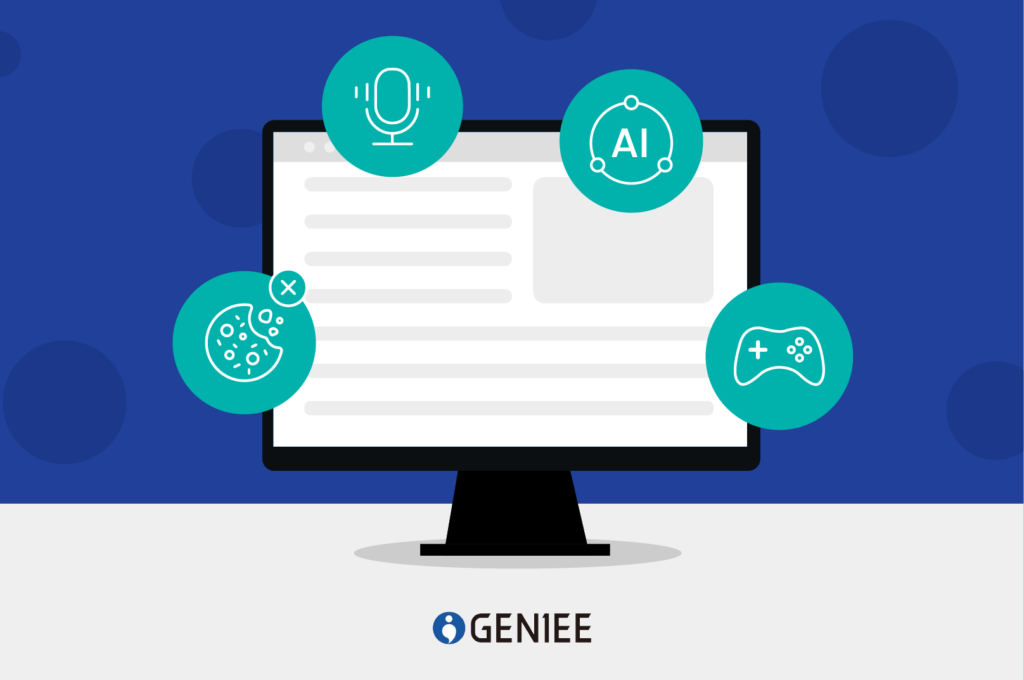
As we navigate the ever-evolving landscape of the ad tech industry, CPM emerges as a crucial metric for publishers to assess the value of their inventory.
CPM offers valuable insights into advertising expenditure and impressions, enabling publishers to gauge the effectiveness of their ad placements.
This blog will explore CPM in detail, its definition, various types, challenges associated with low average CPM, and actionable tips to enhance CPM performance. But before we embark on our journey to boost CPM, let’s lay the groundwork by understanding the fundamentals of this essential metric.
What is CPM?
CPM stands for “Cost Per Mille” or “Cost Per Thousand,” with “mille” being the Latin word for “thousand”
In simpler terms, CPM refers to the cost an advertiser pays for every thousand ad impressions on a publisher’s website, regardless of whether the users interact with the ad. CPM is typically used in display advertising, where ads are shown on websites, mobile apps, or other digital platforms.
Knowing how to calculate CPM
The formula to calculate CPM is:
CPM = (Total Cost of Campaign / Total Impressions) * 1000
In this formula:
- Total Cost of Campaign refers to the total amount spent on advertising.
- Total Impressions represent the total ad impressions served during the campaign period.
- The result is multiplied by 1000 to convert the CPM value into cost per thousand impressions.
For example, if an advertiser pays $100 for an ad campaign that receives 1,000,000 impressions, the CPM would be calculated as follows:
CPM=$(100/1,000,000)×1000=$0.1
So, the CPM for this campaign would be $0.1, meaning the advertiser is paying $0.1 for every one thousand impressions of their ad.
Understanding Different Types of CPM Metrics
When discussing the CPM model, many types of CPMs have emerged along with the development of digital marketing. Some of the popular types used by advertisers and publishers are:
Standard CPM
This is the traditional CPM model, in which advertisers pay a fixed amount for the opportunity to display their ad to publishers’ website for a thousand users, regardless of user interactions such as clicks or conversions. It’s commonly used for brand awareness campaigns, where the goal is to maximize exposure.
Flat-Rate CPM
Flat-rate CPM allows advertisers to pay a fixed rate for a specified volume of impressions over a set period, regardless of fluctuations in demand or performance. This model offers predictability in pricing and budgeting, making it suitable for long-term advertising commitments or campaigns with specific budget constraints. The formula of flat-rate CPM is:
(Total cost/Total impressions)*1000
eCPM
eCPM, mainly used by publishers, measures the effectiveness of an ad unit by taking into account both CPM and performance metrics such as clicks, conversions, or other user engagements. The formula for eCPMa is:
(Total earnings/Total impressions)*1000
CPM provides insights into the overall revenue-generating potential of the ad inventory.
vCPM
With vCPM (viewable CPM), publishers only receive money for impressions that are deemed viewable, meaning they are actually seen by users. An impression is considered viewable if a certain portion of the ad (typically at least 50% of its pixels) is visible on the user’s screen for a specified duration (usually one second for display ads and two seconds for video ads). The formula for vCPM is:
(Budget of the campaign/Viewable impressions)*1000
qCPM
qCPM stands for “qualified cost per mille”. In the qCPM model, advertisers are charged based on the number of ad impressions that meet specific criteria, such as viewability, engagement, or conversion rates. This ensures that advertisers only pay for ad impressions that are more likely to result in the desired outcome, such as clicks or conversions. The formula to calculate qCPM is:
(Budget of the campaign/Quality impressions)*1000
Key Factors Affecting CPM Performance
To enhance CPM, publishers need to identify factors contributing to its decline. Here are several common reasons for low average CPMs.
Ad Formats and Placement
Publishers might be in a big loss if they can not choose the right ad formats and placements for their websites.
For example, suppose your website is a destination of visual content, yet you haven’t embraced in-image advertising. In that case, you could be missing out on valuable opportunities to monetize their content.
In other cases, publishers choose to allocatemany banner ad slots instead of video ad slots despite having a lot of video content. That’s clearly not a wise strategy.
So, understanding your traffic and audience behavior well to choose the right ad format and placements helps maximize your ad revenue.

Seasonality and Demand
CPMs can strongly fluctuate due to seasonality and changes in advertiser demand. During holiday seasons or special events, there is usually an uptick in ad inventory demand, which can lead to higher CPMs. Publishers should anticipate and capitalize on these trends to maximize revenue.
Ad Density
Proper ad allocation on a web page is necessary if publishers don’t want to lower CPMs. While there is a 30% ad density rule, it’s important for publishers to evaluate their websites and ensure they are not compromising on user experience by displaying too many intrusive ads. Users who get annoyed with too many ads can choose to install ad blockers, resulting in a decrease in ad viewability rate. Ads that are not viewable or only partially viewable may produce lower CPMs.
Privacy Laws
Privacy laws regulate the collection, use, and protection of personal data by digital platforms. Laws such as the GDPR in the European Union, the CCPA in the United States, and the LGPD in Brazil can have a detrimental effect on data collection, a crucial aspect of ad targeting.
This reduces the effectiveness of audience targeting strategies, leading to lower CPMs as advertisers may be less willing to pay for less precise targeting.
Quality of Content
Content quality plays a key role in determining the value of ad space on a website. Ad space on websites with high-quality content can attract more higher-paying ads than those with low-quality content. It’s because the algorithm on ad platforms considers a multitude of data points to determine which ads should be displayed to which users.
Bad Traffic
When ads are displayed to bots or non-human traffic, advertisers can lose money as they are paying for impressions that are not being seen by real people. This can lead to a decrease in CPM as advertisers may become hesitant to advertise on a website that has a high rate of bad traffic. Additionally, bad traffic can also lead to a decrease in the quality of ads and lower engagement rates, which can further impact CPM.
How to increase CPM?
Maintaining and improving an average CPM is a top priority for publishers to maximize ad revenue. To do that, publishers must adopt a multifaceted approach that leverages a combination of innovative techniques, strategic partnerships, and data-driven insights. Here are several effective strategies that publishers can follow.
Here are a few tips for publishers to increase CPM.
Choose the right ad formats
In the previous part, we talked about the significance of selecting suitable ad formats for a website. It is crucial for publishers to think through the user’s perspective. If a website primarily contains video content, then it would be more beneficial to display video ads, as users tend to prefer videos. Here are popular ad formats that publishers can deploy:
Banner Ads
If the website primarily consists of text-based content, banner ads are the optimal choice. Any other ad format, except for native ads, may divert the user’s attention and disrupt the overall user experience.
Native Ads
Native ads are ads designed to blend in seamlessly with the surrounding content, resulting in minimal disruption for users. Hence, they often have a higher CPM.
Video Ads
In comparison with other ad formats, video ads have a higher potential for engagement and attention-grabbing. Video ads can lead to higher CPM rates for publishers and better ROI for advertisers.
Improve content quality
Advertisers look for high-quality content that fits with their target audience and resonates with their brand values. If a publisher’s content is of low quality or doesn’t match the advertiser’s target audience, it can lead to low engagement and lower CPM rates.
To address that issue, publishers should try to mix up content formats like blog posts, videos, infographics to keep the audience engaged and interested. Understanding your audience’s interests, preferences, and behaviors can help deliver relevant and well-written content.
Utilize the audience data gathered from the website
With the deprecation of 3rd party cookies, 1st party data becomes one of publishers’ most valuable resources. By utilizing 1st party data, publishers can receive the following benefits:
- Higher revenue: Increasing the precision of targeting by leveraging audience segments to sell your inventory at a higher price. Advertisers are often willing to pay higher CPMs for targeted impressions that deliver better results.
- Improved user experience: The audience can read not only relevant content but also see relevant ads, leading to an enhanced user experience.
Publishers can achieve these by either investing in a high-quality data management platform/customer data platform or using audience segmentation in Google Analytics.
Ad viewability
Improving the viewability of ad impressions is essential for publishers seeking to increase their CPM. Enhanced viewability leads to greater engagement with ads since users are more likely to notice and interact with them. This increased engagement signals to advertisers that the ad inventory is valuable, prompting them to bid higher CPMs for placements that offer guaranteed viewability.

Here are some tips that publishers can follow to improve ad viewability.
- Fix the page loading speed. A slow-loading website affects ad rendering, leaving insufficient time for users to register an impression. Publishers can employ lazy loading to resolve this.
- Optimize for a mobile-first web environment. With more users browsing on phones, non-optimized ads definitely result in low CPMs. Ensuring ads are responsive for mobile devices maximizes revenue potential.
- Try out different ad layouts and placements.
Optimize Floor Price
Setting the right price floors can be a tricky task. If you set the floors too high, it may discourage demand partners from bidding on your inventories. On the other hand, lower floor prices may attract lower CPMs.
Therefore, determining the optimal floor prices requires careful consideration and can be a complex and time-consuming process.
So, how do we address this?
- Dynamic Pricing: Implement dynamic pricing strategies that adjust floor prices in real-time based on factors such as user behavior, time of day, device type, and market conditions. Dynamic pricing allows you to capture maximum value from each ad impression while responding to changes in demand.
- Experiment: Closely follow up on the performance of the newly set floor price. The practice is comparing fill rates and CPMs during your experiment. In the end, you will find the optimal one that can maintain higher fill rates and CPM.
Header bidding
Header bidding is an advanced technique in the programmatic advertising realm. It is believed to boost CPMs by up to 50% if implemented correctly. For publishers who have yet to adopt header bidding, initiating the process sooner rather than later can lead to enhanced CPMs.
More to discover
All About Video Ads: Formats, Setup & Benefits for Publishers

However, the technical complexity of header bidding can pose challenges for publishers, potentially resulting in lower-than-expected CPMs. To address this, publishers can take several steps:
- Consider collaborating with an advertising network, such as Geniee, which has an exceptional Ad Ops team specializing in header bidding. By ensuring proper deployment and continuous technical support, your CPM can be significantly increased.
- Leave header bidding enough time to yield results. Initially, bidders may bear skepticism about the new websites due to the lack of historical information about the publisher’s inventory. That’s why it necessitates time for revenue to increase gradually.
- Optimize the setup for maximum yield. As header bidding becomes increasingly popular among publishers, you have to go the extra mile to maintain your competitive edge.
Before implementing the above steps, it’s essential to select a suitable header bidding partner. This is a well-informed decision based on comprehensive information about your inventory.
Optimization
Last but not least, you must regularly monitor and analyze the performance of your ad inventory, which can be done via analytics. Analytics can provide valuable insights into various metrics, including bidders’ win rates, average bidding price, fill rate, and more. By constantly optimizing key performance metrics, you can make informed decisions based on data instead of relying on instincts.
Conclusion
Throughout this guide, we’ve provided insights and strategies to help you increase your CPM and unlock greater revenue potential.
However, improving CPM performance is a customized approach that requires publishers to address on case-to-case basic. Our advice is always staying informed about changes and advancements in the ad tech industry to keep your business fruitful.

0 Comments